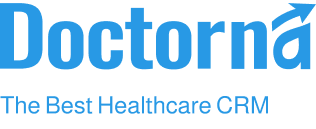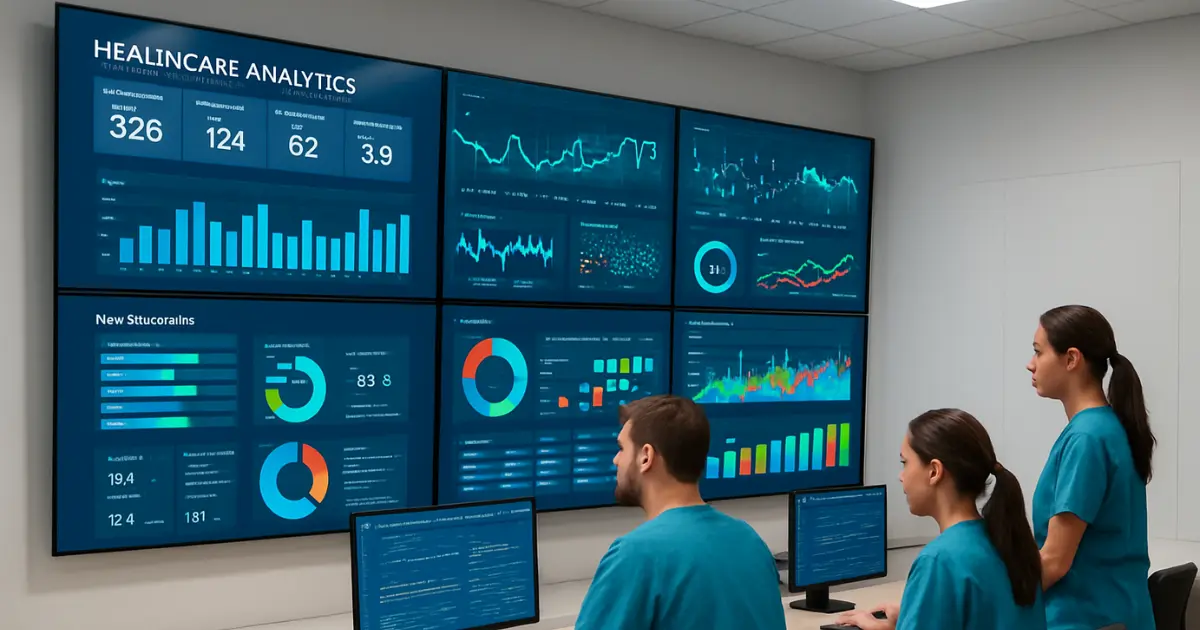10 Steps to Implement CRM for Clinics in Dubai
Step 1: Defining Your Clinic’s Needs and Goals
Before embarking on the transformative journey of healthcare CRM implementation, clinics in Dubai must first undertake a meticulous needs assessment. This crucial initial phase involves a deep dive into your current operational challenges and the articulation of clear, measurable objectives for your new system.
Implementing a medical CRM without a clear understanding of your clinic’s pain points is akin to navigating without a map. This stage requires honest self-assessment and the active participation of all key stakeholders – from doctors and nurses to administrative staff and front-desk personnel.
Begin by documenting the inefficiencies that hinder your clinic’s smooth operation. Are appointment scheduling conflicts frequent? Is patient data scattered across multiple, disconnected systems? Are communication workflows cumbersome, leading to delays and errors? Are you struggling to personalize patient interactions or track patient engagement effectively? Are billing processes prone to errors and delays? Do you lack the insightful reports needed to make data-driven decisions?
Practical Tips:
- Conduct Workshops: Organize dedicated workshops with representatives from each department to elicit their perspectives on current challenges and desired improvements.
- Process Mapping: Visually map your key clinical and administrative workflows to identify bottlenecks and areas ripe for optimization through a clinic management software.
- Data Audits: Analyze your existing patient data, identifying inconsistencies, redundancies, and areas requiring cleansing before migration.
- Technology Assessment: Evaluate your current technology infrastructure and identify any limitations or integration requirements for a new patient management software.
Setting SMART Goals
Once you have a clear understanding of your challenges, translate them into specific, measurable, achievable, relevant, and time-bound (SMART) goals for your CRM for clinics Dubai implementation.
Examples of SMART Goals:
- Specific: Implement a CRM to streamline appointment scheduling and reduce no-shows.
- Measurable: Reduce appointment no-shows by 15% within the first three months of CRM adoption.
- Achievable: Choose a CRM with features specifically designed for appointment management and automated reminders via SMS and whatsapp api integration.
- Relevant: Improved appointment adherence will directly impact clinic efficiency and revenue.
- Time-bound: Achieve the 15% reduction within three months of the CRM go-live date.
Similarly, you might set goals for improving patient satisfaction (measured through surveys), streamlining billing cycles (reducing average invoice processing time), or enhancing patient engagement (increasing patient portal adoption rates).
The Importance of Stakeholder Buy-in
Engaging all stakeholders from the outset is crucial for fostering a sense of ownership and ensuring smooth adoption of the new healthcare CRM. Their input will not only provide valuable insights into the clinic’s needs but also help address any potential resistance to change.
A meticulously conducted needs assessment, coupled with clearly defined and collaboratively developed SMART goals, lays the indispensable groundwork for a successful CRM for clinics Dubai implementation, ensuring the chosen system is perfectly aligned with your practice’s unique objectives.
Step 2: Researching and Selecting the Right Healthcare CRM Vendor
With a comprehensive understanding of your clinic’s needs and objectives, the next pivotal step in healthcare CRM implementation involves thorough research and the selection of a healthcare CRM vendor whose solution best fits the specific requirements of the Dubai healthcare landscape.
The market for medical CRM systems is vast, and choosing the right vendor is akin to selecting a long-term strategic partner. This decision requires careful consideration of numerous factors beyond just the software’s features.
Key Factors to Consider:
- Industry Specialization: Prioritize vendors with a proven track record in the healthcare CRM space. They will possess a deeper understanding of the unique workflows, regulatory requirements, and patient relationship dynamics within a clinical setting. Look for vendors with experience working with clinics similar to yours in size and specialty.
- Features and Functionality Alignment: Meticulously compare the features offered by different vendors against the needs you identified in Step 1. Ensure the clinic management software offers robust appointment scheduling, seamless EHR/EMR integration, comprehensive billing and invoicing, effective patient communication tools (including potential for whatsapp api integration), insightful reporting and analytics, and customizable workflows.
- Scalability: Consider the long-term growth trajectory of your clinic. Will the medical CRM system be able to scale to accommodate increasing patient volumes, additional locations, or new services?
- Integration Capabilities: Seamless integration with your existing systems is crucial for data consistency and workflow efficiency. Inquire about the CRM’s ability to integrate with your current EHR/EMR, accounting software, lab information systems, and other essential applications. The potential for whatsapp api integration for enhanced patient communication should also be a key consideration.
- Compliance and Security: Data security and compliance with local regulations, particularly those set forth by the Dubai Health Authority (DHA) regarding patient data privacy and security, are non-negotiable. Verify that the vendor adheres to international security standards and has experience with UAE healthcare regulations.
- Support and Training: Evaluate the vendor’s support infrastructure, including availability, response times, and communication channels. Understand the training programs they offer for initial implementation and ongoing staff onboarding. A vendor with strong local support in Dubai can be a significant advantage.
- Pricing and ROI: Carefully analyze the total cost of ownership, including initial licensing fees, implementation costs, ongoing subscription fees, and potential costs for customization and support. Assess the potential return on investment (ROI) by considering factors like increased efficiency, reduced administrative overhead, improved patient retention, and enhanced revenue generation.
- Local Presence and Understanding of the Dubai Market: Vendors with experience in the UAE healthcare market will have a better understanding of local practices, regulatory nuances, and cultural considerations. Inquire about their existing client base in Dubai and their familiarity with local healthcare workflows.
Practical Tips for Vendor Selection:
- Request Detailed Demos: Insist on comprehensive product demonstrations tailored to your clinic’s specific needs and workflows.
- Request Trial Accounts: If possible, request a trial account to allow your team to experience the software firsthand.
- Check References and Read Reviews: Contact existing clients of the vendors you are considering and read online reviews to gain insights into their experiences.
- Prepare a Detailed RFP (Request for Proposal): Outline your specific requirements and ask vendors to respond with detailed proposals.
- Ask the Tough Questions: Don’t hesitate to ask detailed questions about security protocols, compliance certifications, integration capabilities, support SLAs (Service Level Agreements), and customization options.
Diligent research and a thorough evaluation process are paramount to selecting the healthcare CRM vendor that not only offers a robust and feature-rich clinic management software but also demonstrates a deep understanding of the Dubai healthcare landscape and a commitment to being a reliable long-term partner.
Step 3: Planning and Preparing for Data Migration
A critical phase often underestimated in implementing CRM for clinics is the meticulous planning and preparation for the migration of your existing patient data to the new system. A well-executed data migration strategy minimizes disruption, preserves data integrity, and sets the stage for successful adoption of your patient management software.
Your existing patient data is a valuable asset, and ensuring its accurate and secure transfer to the new medical CRM system is paramount. Haphazard data migration can lead to errors, data loss, and significant operational disruptions.
Key Considerations for Data Migration:
- Data Cleansing and Organization: Before migration, invest time in cleaning and organizing your existing data. Identify and rectify inconsistencies, duplicates, and outdated information. This will ensure that only clean and accurate data is transferred to the new system.
- Defining the Data Migration Scope: Determine precisely which data fields and records need to be migrated. Prioritize essential data and consider a phased approach if migrating all data at once poses significant challenges.
- Choosing a Data Migration Strategy:
1. Phased Approach: Migrate data in stages, starting with essential information and gradually transferring less critical data. This can minimize disruption but may require maintaining both systems for a period.
2. Big Bang Approach: Migrate all data at once during a planned downtime. This offers a clean cutover but carries a higher risk if issues arise. - Leveraging Vendor Support: Your chosen healthcare CRM vendor will likely offer tools and expertise to assist with data migration. Work closely with their team to develop a comprehensive migration plan.
- Ensuring Data Accuracy and Completeness: Implement rigorous data validation processes before, during, and after migration to ensure accuracy and completeness. Compare data in the old and new systems to identify and rectify any discrepancies.
- Data Security and Compliance: Throughout the data migration process, maintain strict adherence to Dubai’s data protection laws and DHA guidelines. Ensure that data is transferred securely and that access controls are implemented in the new system.
- Data Backup: Before initiating any data migration activities, perform a complete backup of your existing data. This provides a safety net in case any unforeseen issues occur during the transfer.
Practical Tips for Data Migration:
- Appoint a Data Migration Lead: Assign a dedicated individual or team to oversee the entire data migration process.
- Develop a Detailed Migration Plan: Outline the steps involved, timelines, responsibilities, and data validation procedures.
- Conduct Test Migrations: Perform several test migrations with a subset of your data to identify potential issues and refine the migration process.
- Communicate with Your Team: Keep your staff informed about the data migration schedule and any potential impact on their workflows.
- Post-Migration Monitoring: After the migration is complete, closely monitor the new system to ensure data integrity and address any reported issues promptly.
Meticulous planning and thorough preparation for data migration are absolutely crucial for a seamless transition to your new patient management software in Dubai, safeguarding the integrity of your valuable patient information and minimizing operational disruptions.
Step 4: Configuring and Customizing the CRM for Clinic Workflow
With your healthcare CRM selected and data migration underway, the next vital step involves configuring and customizing the system to precisely align with the unique workflows and operational processes of your clinic in Dubai.
An off-the-shelf medical CRM system may not perfectly match the specific nuances of your clinic’s daily operations. Configuration and customization allow you to tailor the system to optimize efficiency, enhance user adoption, and meet your specific requirements.
Key Areas for Configuration and Customization:
- User Roles and Permissions: Define specific user roles (e.g., doctor, nurse, administrator, receptionist) and assign appropriate access permissions to different features and data within the CRM. This ensures data security and streamlines workflows by providing users with access only to the information they need.
- Appointment Types and Scheduling Rules: Configure the system with your clinic’s specific appointment types, durations, scheduling rules, and availability settings for different practitioners and services.
- Communication Templates: Customize email, SMS, and whatsapp api integration message templates for appointment confirmations, reminders, follow-ups, and other patient communications. Personalize these templates with your clinic’s branding and relevant patient information.
- Billing and Invoicing Settings: Configure the billing module with your clinic’s fee structures, tax rules (relevant to the UAE), insurance provider details, and invoice templates.
- Reporting Dashboards and KPIs: Customize reporting dashboards to display key performance indicators (KPIs) that are most relevant to your clinic’s goals, such as appointment adherence rates, patient acquisition costs, and revenue trends.
- Custom Fields and Workflows: Many customizable clinic CRM systems allow you to create custom fields to capture specific patient information relevant to your specialty and to design automated workflows for tasks like appointment follow-ups or patient satisfaction surveys.
- Integration Settings: Configure integrations with other essential systems, such as your EHR/EMR, accounting software, and whatsapp api integration providers.
Practical Tips for Configuration and Customization:
- Involve End-Users: Work closely with representatives from each department to understand their specific workflow needs and tailor the system accordingly.
- Prioritize Key Workflows: Focus on customizing the workflows that will have the most significant impact on efficiency and patient experience.
- Test Thoroughly: After each configuration or customization change, conduct thorough testing to ensure it functions as expected and doesn’t negatively impact other parts of the system.
- Document Everything: Maintain detailed documentation of all configuration and customization changes for future reference and troubleshooting.
- Iterative Approach: Be prepared for an iterative approach. You may need to make adjustments and refinements as your team becomes more familiar with the system.
Thoughtful configuration and strategic customization of your customizable clinic crm are paramount to ensuring it seamlessly integrates with your clinic’s daily operations in Dubai, maximizing its effectiveness and driving user adoption.
Step 5: Staff Training and Onboarding
The ultimate success of your healthcare CRM implementation hinges on the proficiency and comfort level of your staff in using the new system. Comprehensive staff training and a well-structured onboarding process are therefore critical investments.
Even the most feature-rich medical CRM will fall short of its potential if your team is not adequately trained to utilize it effectively. Training should be tailored to the specific roles and responsibilities of different user groups.
Key Aspects of Staff Training:
- Role-Based Training: Develop training modules that are specific to the needs of doctors, nurses, administrative staff, and front-desk personnel. Each group will interact with different features and functionalities of the CRM.
- Hands-On Training: Emphasize practical, hands-on training using real-life scenarios relevant to your Dubai clinic’s daily operations. Allow staff ample opportunity to practice using the system under guidance.
- Comprehensive Training Materials: Provide easily accessible training materials, such as user manuals, video tutorials, and quick reference guides.
- Train-the-Trainer Approach: Consider identifying internal “champions” within each department who can receive in-depth training and then assist their colleagues.
- Ongoing Support and Resources: Establish clear channels for ongoing support and provide access to resources for answering questions and troubleshooting issues.
- Highlighting Benefits: Clearly communicate the benefits of the new patient management software to your staff, emphasizing how it will simplify their tasks, improve efficiency, and ultimately enhance patient care.
Practical Tips for Staff Training:
- Start Early: Begin training well before the go-live date to allow staff ample time to learn and become comfortable with the system.
- Break Down Training: Divide training into manageable modules to avoid overwhelming staff.
- Use Real Patient Data (in a Sandbox Environment): Utilize anonymized or test patient data for training purposes to provide a realistic learning experience.
- Encourage Questions and Feedback: Create a supportive learning environment where staff feel comfortable asking questions and providing feedback.
- Offer Refresher Training: Provide refresher training sessions periodically to reinforce learning and introduce new features.
- Measure Training Effectiveness: Assess the effectiveness of your training program through quizzes, practical exercises, and feedback surveys.
Investing in thorough and role-specific staff training software healthcare ensures that your team in Dubai can confidently and effectively utilize the new medical CRM system, leading to increased efficiency, improved data accuracy, and a better return on your technology investment.
Step 6: Go-Live and Initial Monitoring
The go-live phase marks the culmination of your planning and preparation, representing the official transition to using your new healthcare CRM in your daily operations in Dubai. Careful planning and diligent monitoring during this initial period are crucial for a smooth and successful launch.
A well-executed go-live strategy minimizes disruptions to patient care and ensures a seamless transition for your staff.
Key Considerations for Go-Live:
- Develop a Go-Live Plan: Outline the specific steps involved in the transition, including timelines, responsibilities, and communication protocols.
- Phased Rollout vs. Big Bang: Decide whether to roll out the CRM to specific departments or user groups first (phased) or implement it across the entire clinic simultaneously (big bang). The best approach will depend on your clinic’s size and complexity.
- Dedicated Support Team: Ensure that a dedicated support team, comprising internal IT staff and representatives from your healthcare CRM vendor, is readily available to address any technical issues or user queries that may arise.
- Communication Strategy: Clearly communicate the go-live date and any temporary changes in workflows to your staff and patients.
- Contingency Plan: Develop a contingency plan to address potential system failures or major issues that could disrupt operations. This might involve having a backup system or manual processes in place.
Key Areas to Monitor Post-Go-Live:
- System Performance and Stability: Closely monitor the CRM’s performance, including response times, loading speeds, and overall stability.
- Data Accuracy and Completeness: Regularly verify the accuracy and completeness of patient data in the new system.
- User Adoption and Satisfaction: Track how frequently staff are using the CRM and solicit their feedback on their experience. Address any usability issues or concerns promptly.
- Workflow Efficiency: Observe whether the CRM is indeed streamlining workflows as intended. Identify any bottlenecks or areas where further optimization may be needed.
- Integration Functionality: Ensure that all integrations with other systems (e.g., EHR, billing) are functioning correctly.
Practical Tips for Go-Live and Initial Monitoring:
- Pilot Testing: Conduct thorough pilot testing with a small group of users before the full go-live to identify and resolve any potential issues in a controlled environment.
- Super User Support: Identify and empower “super users” within each department. These are individuals who receive more in-depth training and can serve as first-line support for their colleagues during and immediately after the go-live. They can help answer common questions, troubleshoot basic issues, and act as liaisons between the end-users and the core implementation team or vendor support. This distributed support network can significantly alleviate the burden on the central support team.
- Staggered Rollout (If Applicable): Depending on the size and complexity of your clinic, consider a staggered rollout. This involves implementing the CRM in one department or with a small group of users first, allowing you to identify and address any issues before deploying it across the entire organization.
- Clear Communication Channels: Establish clear communication channels for reporting issues and seeking support during the initial monitoring phase. This could involve a dedicated email address, a specific point of contact, or even a temporary communication platform.
- Regular Check-in Meetings: Schedule regular brief check-in meetings with key stakeholders and super users to gather feedback, identify emerging issues, and track progress during the initial weeks after go-live.
- Performance Monitoring Tools: Utilize any performance monitoring tools provided by the CRM vendor or your IT team to track system stability, response times, and data synchronization.
- Have a Rollback Plan (Just in Case): While the goal is a successful go-live, it’s prudent to have a well-defined rollback plan in case critical issues arise that severely impact operations. This plan should outline the steps to revert to your previous systems if necessary.
- Celebrate Small Wins: Acknowledge and celebrate small successes during the initial monitoring phase to build momentum and reinforce positive adoption.
A well-planned go-live, coupled with diligent initial monitoring and proactive support mechanisms, significantly increases the likelihood of a smooth transition to your new patient management software and sets the stage for long-term success in your Dubai clinic.
Step 7: Ongoing Optimization and Continuous Improvement
Implementing a healthcare CRM is not a static project with a definitive end date. To ensure it continues to deliver maximum value and adapt to the evolving needs of your clinic in Dubai, a commitment to ongoing optimization and continuous improvement is essential.
The healthcare landscape, technological capabilities, and your clinic’s specific requirements will inevitably change over time. Regularly reviewing and optimizing your medical CRM system ensures it remains a powerful and relevant tool.
Key Areas for Ongoing Optimization:
- Regular Performance Reviews: Periodically assess the CRM’s performance against the goals you established in Step 1. Are you meeting your targets for reduced no-shows, improved patient satisfaction, or streamlined billing? Identify areas where the system could be better utilized or configured.
- Gathering User Feedback: Establish channels for ongoing feedback from your staff. They are the daily users of the system and can provide invaluable insights into usability issues, workflow bottlenecks, and potential areas for improvement. Encourage regular feedback sessions or utilize feedback surveys.
- Analyzing Data and Reports: Regularly analyze the data and reports generated by your customizable clinic crm. Identify trends, patterns, and areas where adjustments to your workflows or CRM configuration could lead to better outcomes. For example, analyzing appointment cancellation reasons might reveal a need for clearer pre-appointment instructions communicated via whatsapp api integration.
- Exploring New Features and Functionalities: As your healthcare CRM vendor releases new features and functionalities, evaluate their potential benefit for your clinic. Staying updated can provide opportunities to further enhance efficiency, improve patient engagement, or streamline specific processes.
- Staying Updated with Vendor Updates and Best Practices: Keep abreast of vendor updates, industry best practices in healthcare technology adoption, and new trends in crm in healthcare industry. This knowledge can inform your optimization efforts.
- Addressing Evolving Regulatory Requirements: The regulatory landscape in Dubai’s healthcare sector may change. Ensure your CRM configuration and usage remain compliant with the latest DHA guidelines and data privacy laws.
Practical Tips for Ongoing Optimization:
- Schedule Regular Review Meetings: Dedicate time for regular meetings with key stakeholders to discuss CRM performance, user feedback, and potential optimization strategies.
- Create a System for Submitting Enhancement Requests: Allow staff to easily submit requests for new features, workflow adjustments, or system improvements.
- Track Optimization Efforts: Document the changes you make to the CRM and monitor their impact on key metrics.
- Designate a CRM Administrator: Assign a dedicated individual or team to oversee the ongoing maintenance and optimization of your patient management software.
- Consider Advanced Integrations: Explore opportunities for further integration with other healthcare technologies that could benefit your clinic, such as telehealth platforms or patient portals.
A proactive approach to ongoing optimization and continuous improvement ensures that your CRM for clinics Dubai remains a dynamic and valuable asset, adapting to your clinic’s evolving needs and contributing to sustained success in the long term.
Step 8: Measuring ROI and Celebrating Success
After the initial implementation and optimization, it’s crucial to measure the return on investment (ROI) of your healthcare CRM. Quantifying the benefits will validate your decision and provide valuable insights for future technology investments.
Measuring ROI involves tracking the key metrics you identified in Step 1 and comparing them to the results achieved after implementing the CRM. This analysis will demonstrate the tangible benefits of your healthcare technology adoption.
Key Metrics to Track for ROI:
- Reduction in Appointment No-Shows: Calculate the percentage decrease in no-show rates after implementing automated reminders through the CRM, including whatsapp api integration.
- Improvement in Patient Satisfaction Scores: Track changes in patient satisfaction surveys related to communication, appointment scheduling, and overall experience.
- Streamlining of Billing Processes: Measure the reduction in average invoice processing time, decrease in billing errors, and faster payment cycles.
- Increase in Patient Retention Rates: Analyze whether the CRM’s patient engagement features have contributed to improved patient loyalty and retention.
- Enhanced Patient Acquisition: Evaluate the effectiveness of marketing automation tools within the CRM in attracting new patients.
- Improved Staff Efficiency: Assess whether the CRM has freed up staff time by automating tasks, allowing them to focus on higher-value activities.
- Better Data-Driven Decision Making: Highlight instances where insights from the CRM’s reporting and analytics have led to improved operational or clinical decisions.
Practical Tips for Measuring ROI:
- Establish Baseline Metrics: Before implementing the CRM, meticulously track the key metrics you intend to measure.
- Track Data Consistently: Implement processes for consistently tracking these metrics after the CRM go-live.
- Utilize the CRM’s Reporting Capabilities: Leverage the CRM’s built-in reporting tools to generate data on your key metrics.
- Conduct Regular ROI Analysis: Schedule periodic reviews (e.g., quarterly or annually) to analyze the ROI of your CRM investment.
- Communicate Successes: Share the positive results and ROI findings with your team to reinforce the value of the new system and encourage continued adoption.
Celebrating Success
Acknowledging and celebrating the successes achieved through your healthcare CRM implementation can boost team morale and reinforce the positive impact of the technology. Recognize individual and team contributions to the successful adoption and utilization of the system.
By diligently measuring the ROI of your healthcare CRM and celebrating the resulting successes, you can demonstrate the tangible value of your investment and build a culture of continuous improvement within your Dubai clinic.
Step 9: Staying Informed and Adapting to the Future
The journey with your healthcare CRM doesn’t end with optimization and ROI measurement. The healthcare technology landscape is constantly evolving, and staying informed and adapting to future trends is crucial for maintaining a competitive edge in Dubai’s healthcare market.
Continuous learning and a forward-thinking approach will ensure your clinic continues to leverage the full potential of your medical CRM system.
Key Areas for Long-Term Vision:
- Monitor Industry Trends: Stay informed about emerging trends in healthcare technology, such as advancements in artificial intelligence in care delivery, telehealth integration, and personalized medicine, and consider how your CRM might evolve to support these trends.
- Engage with the Vendor Community: Participate in vendor webinars, user conferences, and online forums to learn from other users and stay updated on product roadmaps.
- Explore New Integrations: As new technologies emerge, evaluate potential integrations with your CRM that could further enhance your clinic’s capabilities and patient care.
- Consider Patient Portals and Mobile Apps: Explore how integrating patient portals and mobile apps with your CRM can further empower patients and enhance engagement.
- Focus on Data Analytics and Predictive Insights: As your data accumulates, leverage the CRM’s analytical capabilities to gain predictive insights that can inform clinical decisions and optimize resource allocation.
Practical Tips for Long-Term Vision:
- Dedicate Time for Research and Learning: Encourage key staff members to dedicate time to staying informed about industry trends and new technologies.
- Maintain a Strong Relationship with Your Vendor: Regularly communicate with your CRM vendor to understand their future plans and provide feedback.
- Be Open to Innovation: Embrace a mindset of continuous improvement and be open to exploring new ways to leverage your CRM to enhance patient care and operational efficiency.
By staying informed about future trends and proactively adapting your healthcare CRM strategy, your clinic in Dubai can ensure that this powerful technology continues to be a cornerstone of your success for years to come.
Conclusion
Implementing a healthcare CRM is a significant undertaking, but by following this comprehensive, step-by-step guide, clinics in Dubai can navigate the process effectively and unlock a wealth of benefits. From streamlining workflows and enhancing patient engagement to ensuring regulatory compliance and driving better outcomes, a well-chosen and thoughtfully implemented CRM can be a transformative asset for your practice. Embrace the journey, prioritize planning and communication, and remain committed to ongoing optimization to reap the full rewards of this powerful technology.
Ready to embark on your healthcare CRM implementation journey and transform your clinic in Dubai? Contact Doctorna today for a personalized consultation and discover how our tailored solutions can help you achieve your goals.
Frequently Asked Questions on CRM for Clinics in Dubai
- What is the typical timeframe for implementing a Healthcare CRM for clinics?
The timeframe can vary significantly depending on the complexity of your clinic’s needs, the chosen CRM vendor, the extent of data migration, and the level of customization required. It can range from a few months to over a year. - How much does a Healthcare CRM cost?
Costs vary widely based on the vendor, features required, number of users, and subscription model. Be sure to factor in implementation costs, training fees, and ongoing support. - Is data security a major concern when implementing CRM for clinics?
Yes, data security is paramount. Choose a vendor with robust security measures, encryption protocols, and a strong track record of compliance with data privacy regulations like those in Dubai. - What kind of support should we expect from a CRM vendor?
A good vendor should provide comprehensive support throughout the implementation process and ongoing technical assistance, training resources, and regular updates. - Can a Healthcare CRM integrate with our existing EHR system?
Seamless EHR integration is crucial. Ensure that the CRM you choose has proven integration capabilities with your current EHR system. - How important is customization?
Customization is often necessary to align the CRM with your clinic’s specific workflows and needs. Choose a customizable clinic CRM that offers the flexibility you require. - What is the role of staff in CRM implementation success?
Staff buy-in and effective utilization are critical. Invest in thorough training and communicate the benefits of the CRM to your team. - What are the key benefits of using a Healthcare CRM for clinics in Dubai?
Key benefits include improved patient engagement, streamlined workflows, enhanced data management, better communication, increased efficiency, and improved compliance with local regulations. - Should we consider cloud-based or on-premise CRM solutions?
Both have their pros and cons. Cloud-based solutions offer scalability and accessibility, while on-premise solutions provide more control over data. Your clinic’s specific needs and IT infrastructure will guide this decision. - How can WhatsApp API integration benefit our clinic?
WhatsApp API integration allows for direct and convenient communication with patients for appointment reminders, follow-ups, and quick queries, enhancing patient engagement and satisfaction.







